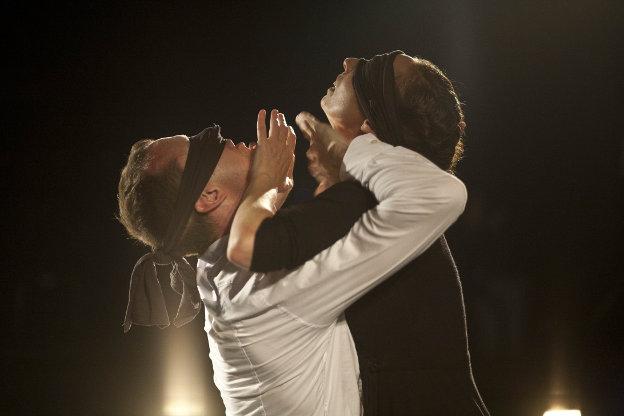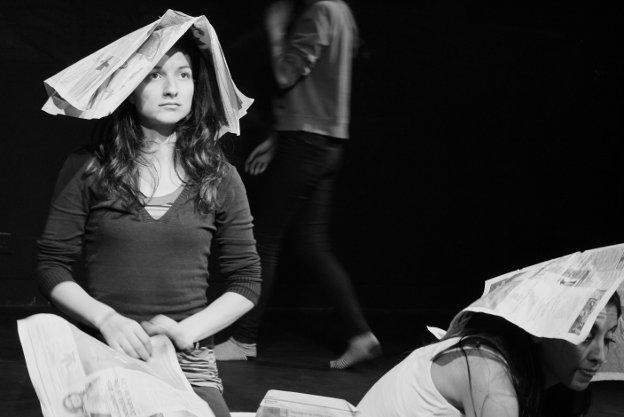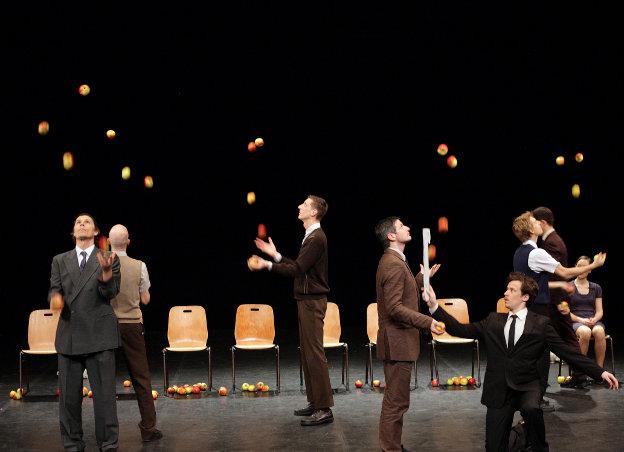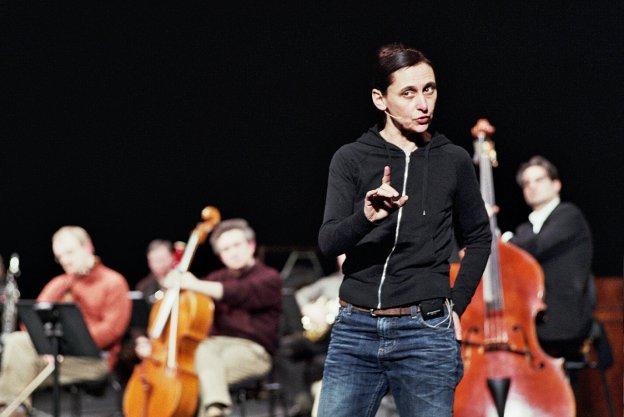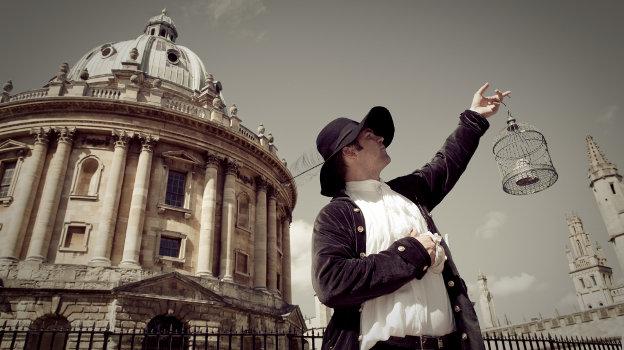2012 saw the loss of two greats of the last two decades of British dance – Gill Clarke and Nigel Charnock, both radically different from each other, but each carving distinctive careers as performers before expanding into choreography and beyond. With Dance Umbrella 2012 dedicated to the memory of both, it is fitting to see Nigel Charnock remembered in his Haunted by the Future.
This wilful and teasingly fragmented vision of the world is one of Nigel Charnock’s last pieces of work, made shortly before his death in August of this year. Embracing familiar Charnock territory and hovering between the boundaries of life and art, Haunted by the Future daubs fragments of blooming and decaying love and lust across the pristine stage of the new Platform Theatre at Central St Martins.
Charnock has always done pungent and arresting moments best. Here, with the creator akin to a fusion of Renaissance painter, animator and impatient DJ, the work is compiled from striking moments of tragedy and elation, liquid phrases of disjointed physical dexterity and teasingly evocative popular soundtracks.
Haunted by the Future‘s two characters enact moments from the trajectory of their doomed relationship. Amongst the vitriol of their rage and wounded pride, and against the broken fragments of popular music, Talia Paz and Mike Winter dance shards of delicious choreography, hovering and plunging into the emotional trauma of this entangled pair. Paz’s deft and fluid classicism is offset by Winter’s bouncing animalism, but they are nonetheless united in moments of delicate tenderness – tenderness that charmingly echoes popular musicals of the 30s and 40s. But despite these satisfying vocabularies, the power in the work is that Charnock doesn’t indulge us in these moments, instead casting each in turn aside and parading new ones in their stead. This wilful disregard for a cohesive development is at once both frustrating and exhilarating, leaving tangible threads of despair or elation hanging in the air as Paz and Winter skip vociferously around their love affair. This fragmentation is somewhat de rigeurin many contemporary choreographies, but the relief is that Charnock carries it off without losing the thread of the world he has created, reining the work in at a satisfying 40 minutes.
What is odd, though, is that this piece seems strangely out of place in this new building, in front of an assortment of London’s contemporary dance scene; it feels like it is missing the audience it deserves and needs. One that doesn’t know its pedigree and comes afresh to the work. Haunted by the Future also brings to mind Howard Barker’s Scenes from an Execution (currently playing at the National Theatre) and in particular the description of the painter Galactica’s work by her commissioner: ‘You sweat. Your paintings sweat,’ he says. ‘No one drapes in your pictures. They clash.’ This description seems justly apposite for Charnock’s work, where individual moments sweat with the dark pathologies of the flourishes of lust and the ravages of heartbreak. It is a shame that Charnock’s work will not get the opportunity Barker’s work has.

